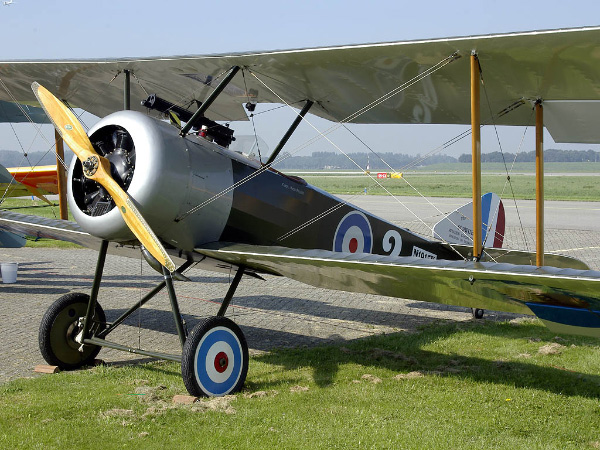
|
 |
Sopwith Pup |
 |
 |
 |
 |
 |
|---|---|---|---|---|---|---|---|
 |
 |
 |
 |
 |
|||
 |
||
|
This British single seat fighter, built by the Sopwith Aviation Company was referred to as the Pup. Officially named the Sopwith Scout, the Pup nickname arose because R.N.A.S. pilots considered it to be the pup of the larger two-seat Sopwith 1½ Strutter. Despite official discouragement, the name Pup remained.
It entered service with the Royal Flying Corps and the Royal Naval Air Service in the fall of 1916. With pleasant flying characteristics and good maneuverability, the aircraft proved very successful. The Pup quickly proved its superiority over the early Fokker, Halberstadt and Albatros biplanes, eventually the Pup was eventually outclassed by newer German fighters, but it was not completely replaced on the Western Front until the end of 1917. Remaining Pups were relegated to Home Defence and training units. The Pup's docile flying characteristics also made it ideal for use in aircraft carrier deck landing and takeoff experiments. |
| The Pup was a single-bay, single-seat biplane with a fabric-covered, wooden framework and staggered, equal-span wings. The cross axle type main landing gear supported on V-struts attached to the lower fuselage longerons. The prototype and most production Pups were powered by the 80 hp (60 kW) Le Rhône rotary engine. Armament was a single Vickers 0.303 inch (7.7 mm) machine gun synchronized with the Sopwith-Kauper synchronizer. |
| The Pup was almost unanimously agreed to be the most pleasant to fly of all British aeroplanes during the 1914 to 1918 period. Production totaled 1,770 aircraft. |
| Specifications: | |
|---|---|
| Sopwith Pup | |
| Dimensions: | |
| Wing span: | 26 ft 6 in (8.08 m) |
| Length: | 19 ft 3.75 in (5.89 m) |
| Height: | 9 ft 5 in (2.87 m) |
| Weights: | |
| Empty: | 787 lb (358 kg) |
| Loaded Weight: | 1,225 lb (557 kg) |
| Performance: | |
| Maximum Speed: | 111 mph (180 km/h) |
| Rate of Climb: | 714 ft/min (217 m/min) climb to 10,000 ft. (3,050 m) |
| Endurance: | 3 hours |
| Powerplant: | |
| One 80 hp (60 kW) Le Rhone air-cooled rotary engine. | |
| Armament: | |
| One Vickers 0.303 inch (7.7 mm) machine gun. | |
© The Aviation History Online Museum.
All rights reserved.
Created November 11, 1997. Updated November 27, 2013.